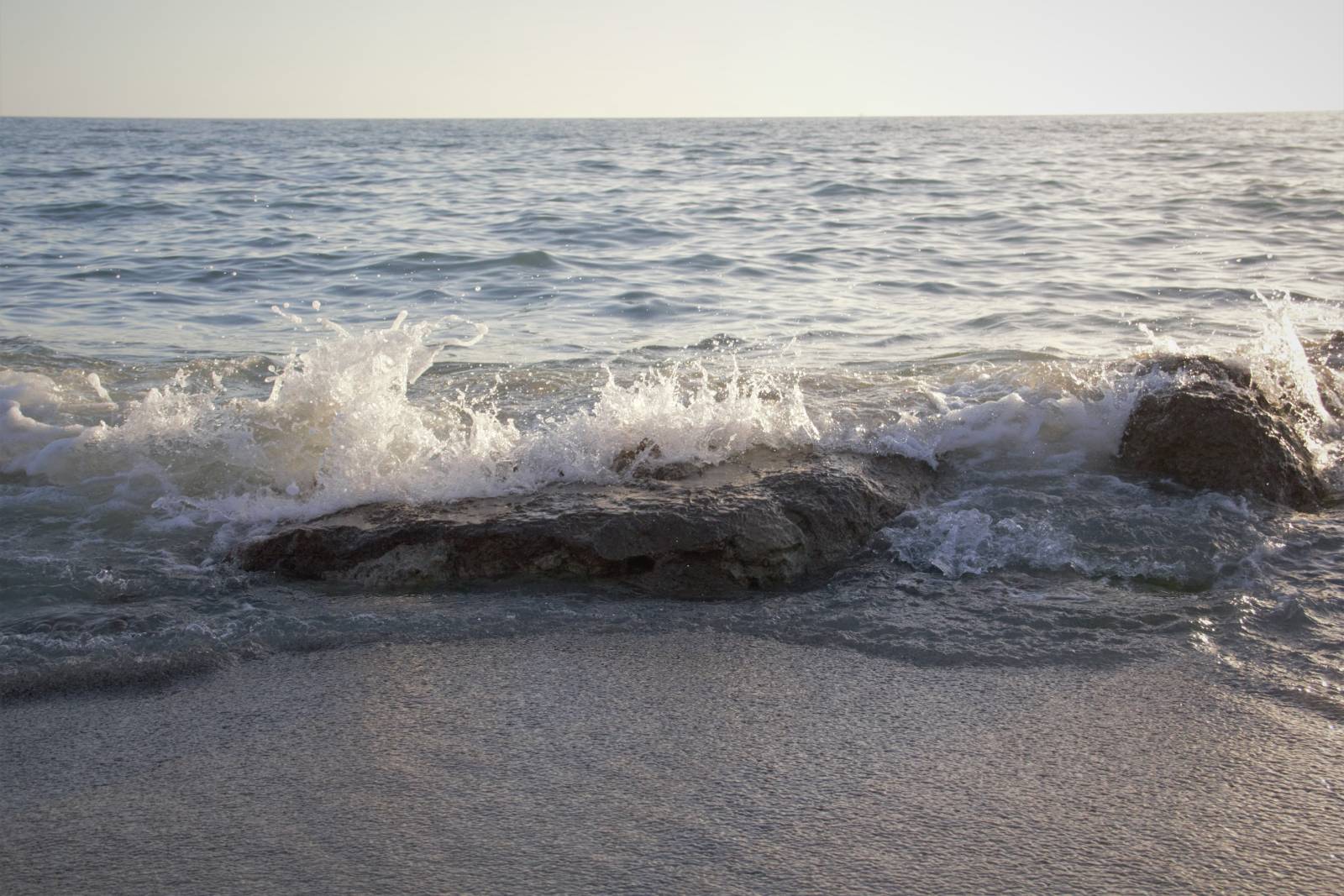Finding seashells at the beach is a classic pastime on nearly every beach in Florida and beyond. But if you know where to go and what to look for there’s an even more interesting treasure hiding under the Florida sand…fossilized shark teeth! On Florida’s west coast you can visit one particular beach that’s world-famous for shark tooth hunters and considered the best beach in Florida for shark teeth hunting.
Caspersen Beach in Venice, Florida
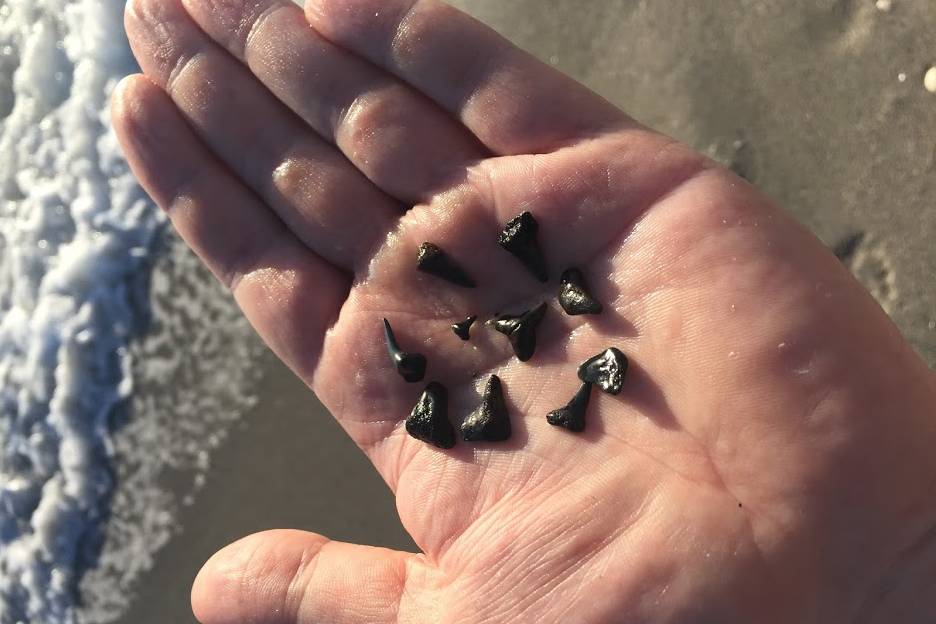
While just about all of Venice Beach in Venice, Florida is great for hunting shark teeth you’ll want to go to Caspersen Beach for the best hunting grounds. Caspersen Beach touts itself as the Shark Tooth Capital of the World. It’s the place where many of the local, experienced shark tooth seekers go looking for these prehistoric treasures in the sand. Teeth from Lemon Sharks, Sand Tigers, Reef Sharks, and Bull Sharks are commonly found here. But the lucky seeker will occasionally find teeth from Great Whites and even the long-extinct Megalodon Shark.
Caspersen Beach is in Venice, Florida. It’s just about a mile south of the Venice Fishing Pier and near the Venice Municipal Airport. There’s plenty of nearby parking at the beach with public restrooms, a boardwalk, and a kayak launching area where you can explore some of the inshore waters of Venetian Waterway Park. While driving in, you might want to make a quick stop along the way at the Venice Fishing Pier to pick up the only tool you’ll need.
Caspersen Beach Address: 4100 Harbor Drive, Venice, FLhttps://www.facebook.com/pages/Caspersen-Beach-Venice-Florida/157113367639351 Website: www.visitsarasota.com/parks/caspersen-beach-park
What you’ll need to go shark tooth hunting
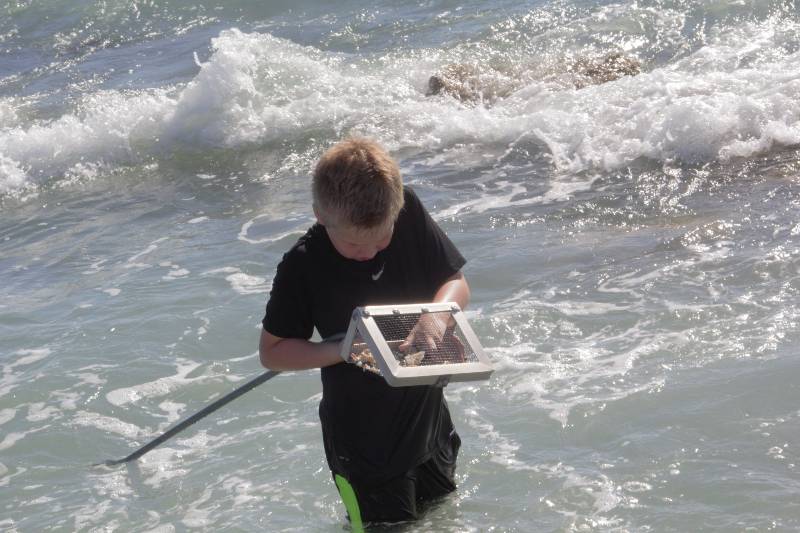
The only tool you’ll need when going shark tooth hunting is a shark tooth sifter. You could use one of those little plastic sand sifters you use for making sandcastles if that’s all you have, but using that can get frustrating fast. For the best chance to easily find shark teeth, you’ll want to use either a basket sifter or a floating ocean sifter. A basket sifter is basically a wire basket on a long handle that you rake through the sand, while an ocean sifter floats on the water and is used to sort out whatever you dump in it.
The more experienced veterans of the shark tooth collecting scene in Venice like to use a floating ocean sifter. This is just a large sifting screen that’s set between four floating pool noodles and gives you a nice large area to work with when sifting for shark’s teeth. A floating sifter like this also makes it easier to work with a partner since one person can sift for shark’s teeth, while the other is scooping sand with a basket sifter and dumping sand into the floating sifters screen. Just like the basket sifter, you’ll just need to use your hands to push around through the little bits of shells and sand on the screen until you find that telltale triangular shape of a shark tooth.
That’s just about it! Shark tooth hunting is a pretty equipment-light activity. The sand at Caspersen Beach is pretty shelly and rocky though, so you might want to think about some water shoes to protect your feet if that kind of thing bothers you.
If shark tooth hunting is something you think you’ll be doing often, it’s worth it to buy your own sifter. But if you’re just out here for a day trip while on vacation you can rent them at the gift shop at the Venice Fishing Pier. Last time we were there, it was only $7 dollars to rent one for the entire day. You might also want to drop into Sharky’s on the Pier, the only beachfront restaurant in the area and a great place to grab a bite and a beer while overlooking the water.
Venice Fishing Pier Address: 1600 Harbor Drive, Venice, FLhttps://www.facebook.com/SharkysOnThePier
@SharkysVenice
@sharkysonthepier Website: www.venicefishingpier.com
How to find shark teeth in the sand
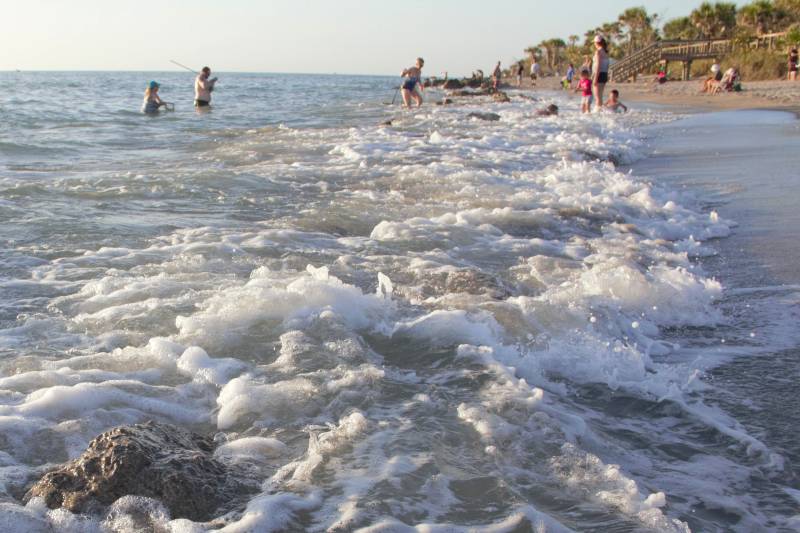
Walk into the water until you find the “Drop Zone.” This is the spot just off the beach where there’s about a one-foot drop off in the sand, and is where a lot of things like shells and shark teeth will get caught. Drag the sifter through the Drop Zone until you have a full basket of shells and sand, then just shake it out while it’s still just under the surface of the water to let out all the sand and tiny pieces of broken shells. Then it’s time to look for anything that resembles a shark tooth. You’ll need to bring the basket up where you can pick through it with your hands, training your eyes to look for any small, black, triangular shapes in the basket. No luck this time? Dump out the contents of your basket and go grab another scoop. If you’re using a floating sifter with a sifter basket, just dump the sandy contents of the basket into the sifter and start looking!
Some of the best places to look are in patches of dark sand because that has the highest density of shells, fossils and teeth. During low tide, you might have to go out a little further past the Drop Zone, since the tide will pull a lot of things out to sea a bit, including those larger shells and shark teeth.
Once you find your first tooth it becomes pretty easy to learn the flow of the process and what you’re looking for. Your eyes become tuned for the shape of shark’s teeth, and it becomes sort of addictive to keep dipping and dragging your sifter through the sand again and again looking for more teeth.
Why are there so many shark teeth in Venice, Florida?
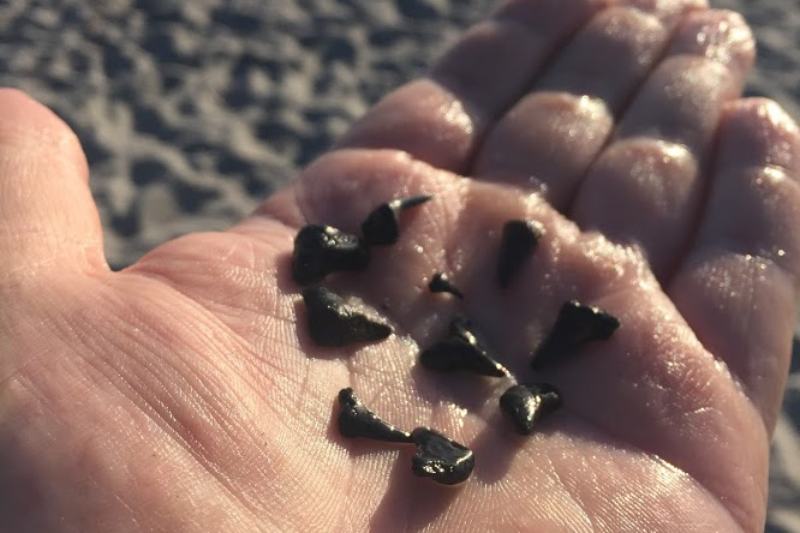
Florida is a big place, with a lot of beaches. So why are there so many shark teeth buried in the sand at this one particular beach? The answer lies in geology. The land area that we now call Florida was under the ocean for many more millions of years than not. Florida only began to emerge from the depths about 30 million years ago, starting as an island in what’s now north-central Florida.
All that time underwater meant Florida had millions of years to collect teeth from the millions of sharks that once lived here. Just one shark can shed over 10,000 teeth during its lifetime. All of those teeth were slowly buried under the sea by millions of years of accumulating sediment. One lucky area that collected a lot of shark teeth became an underground formation now called the Peace River Formation.
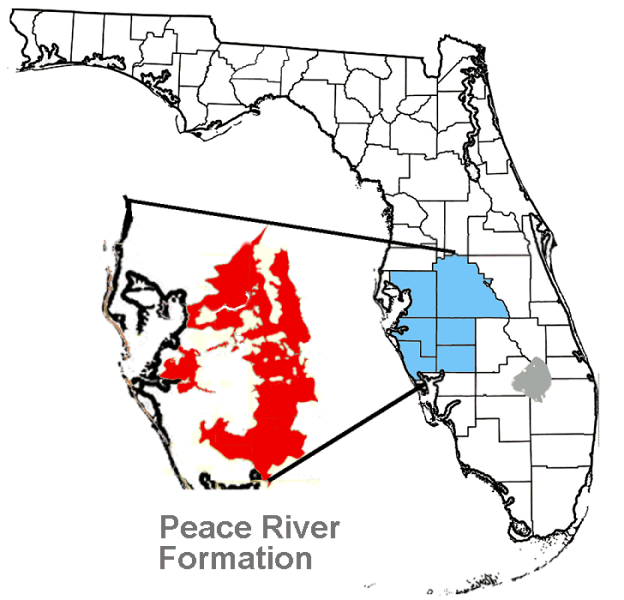
Now let’s fast-forward a few million years to modern-day Florida. All of those shark teeth that were buried under Florida are slowly getting carried back out to sea through underground waterways in the Peace River Formation. This formation has an exposed spot just offshore from Venice Beach where they get washed back to the beach. Literally hundreds of millions of years worth of fossilized sharks teeth, including teeth from the legendary Megalodon, are flowing out of the earth right here.
When you go shark teeth hunting here, you’re not just spending the day looking for souvenirs in the sand. You’re finding pieces of Florida’s prehistoric living history that are slowly being uncovered right here after millions of years. This is why Caspersen Beach in Venice is the best beach in Florida for shark teeth hunting.
